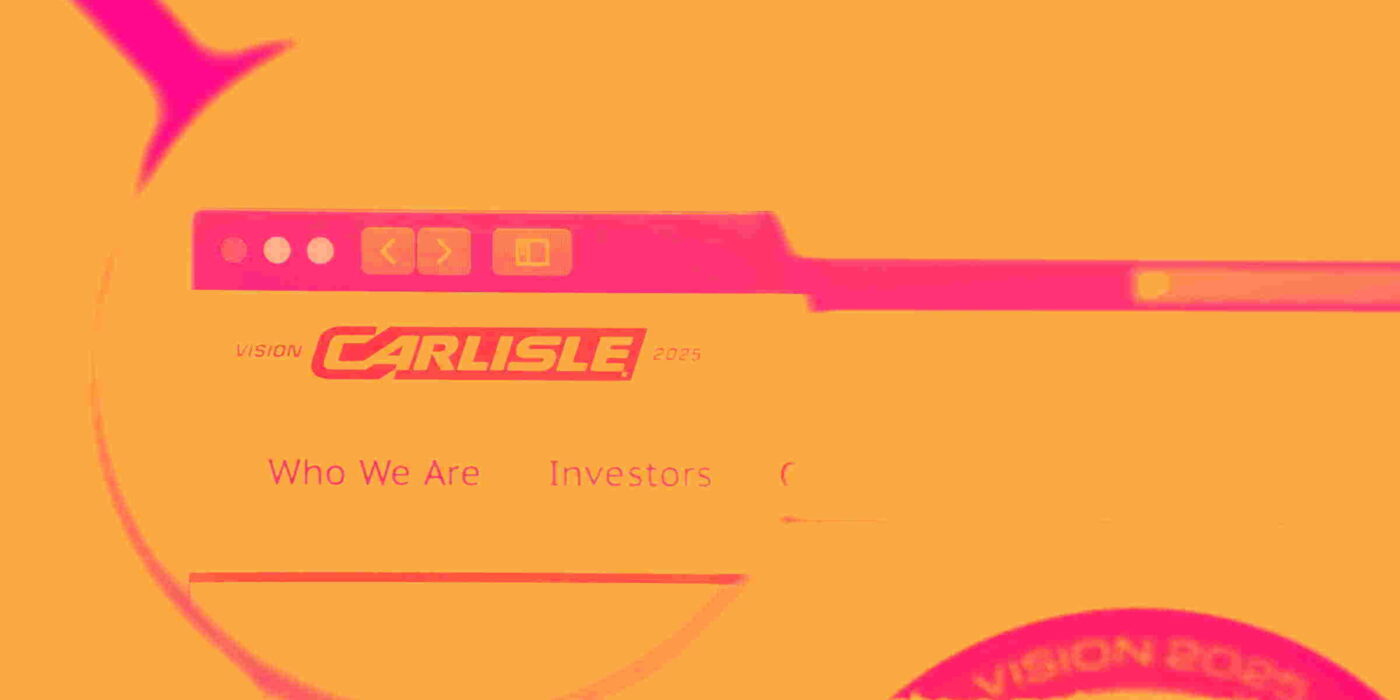
Building envelope solutions provider Carlisle Companies (NYSE: CSL) missed Wall Street’s revenue expectations in Q4 CY2024, with sales flat year on year at $1.12 billion. Its non-GAAP profit of $4.47 per share was 1.1% above analysts’ consensus estimates.
Is now the time to buy Carlisle? Find out by accessing our full research report, it’s free.
Carlisle (CSL) Q4 CY2024 Highlights:
- Revenue: $1.12 billion vs analyst estimates of $1.15 billion (flat year on year, 2.5% miss)
- Adjusted EPS: $4.47 vs analyst estimates of $4.42 (1.1% beat)
- Adjusted EBITDA: $281.7 million vs analyst estimates of $291.4 million (25.1% margin, 3.3% miss)
- 2025 outlook includes MSD revenue growth and ~50 bps of adj. EBITDA margin expansion (in line)
- Operating Margin: 19.9%, down from 22.5% in the same quarter last year
- Free Cash Flow Margin: 29.7%, down from 31.1% in the same quarter last year
- Organic Revenue fell 3.5% year on year (-2.3% in the same quarter last year)
- Market Capitalization: $17.24 billion
Company Overview
Originally founded as Carlisle Tire and Rubber Company, Carlisle Companies (NYSE: CSL) is a multi-industry product manufacturer focusing on construction materials and weatherproofing technologies.
Building Materials
Traditionally, building materials companies have built competitive advantages with economies of scale, brand recognition, and strong relationships with builders and contractors. More recently, advances to address labor availability and job site productivity have spurred innovation. Additionally, companies in the space that can produce more energy-efficient materials have opportunities to take share. However, these companies are at the whim of construction volumes, which tend to be cyclical and can be impacted heavily by economic factors such as interest rates. Additionally, the costs of raw materials can be driven by a myriad of worldwide factors and greatly influence the profitability of building materials companies.
Sales Growth
Examining a company’s long-term performance can provide clues about its quality. Any business can put up a good quarter or two, but the best consistently grow over the long haul. Unfortunately, Carlisle struggled to consistently increase demand as its $5.00 billion of sales for the trailing 12 months was close to its revenue five years ago. This was below our standards and is a rough starting point for our analysis.
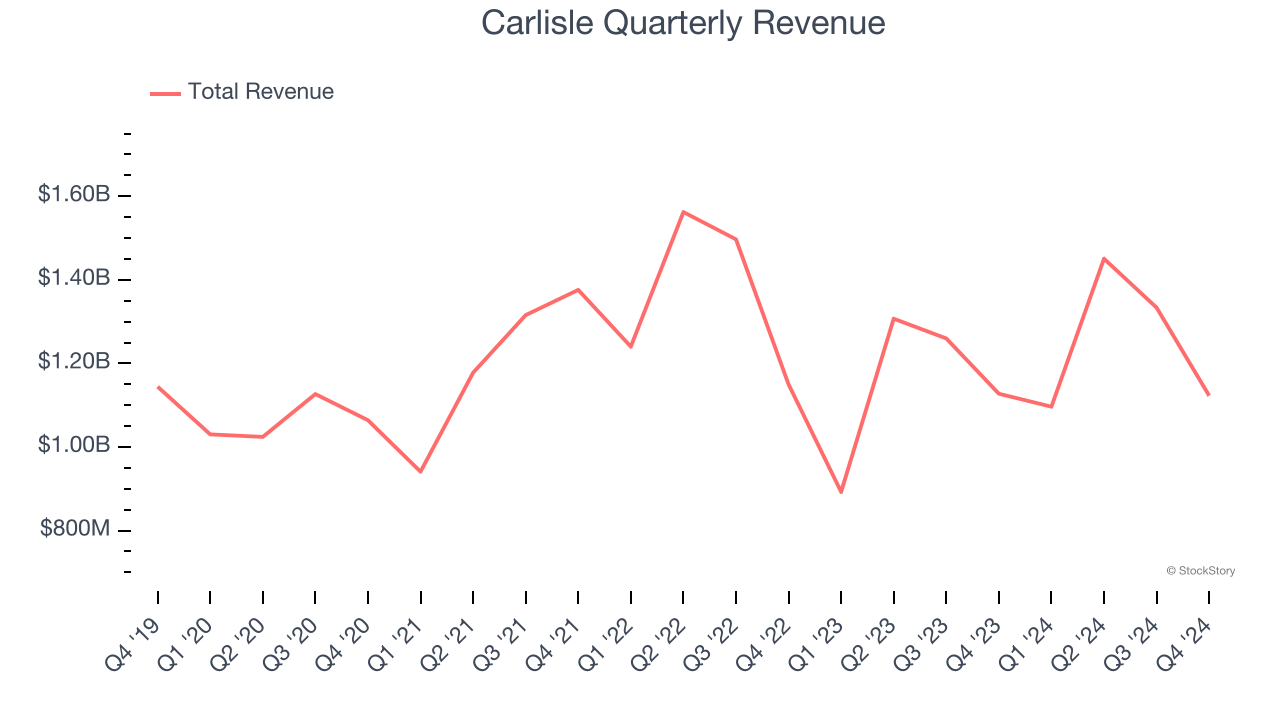
Long-term growth is the most important, but within industrials, a half-decade historical view may miss new industry trends or demand cycles. Carlisle’s recent history shows its demand has stayed suppressed as its revenue has declined by 4.2% annually over the last two years. 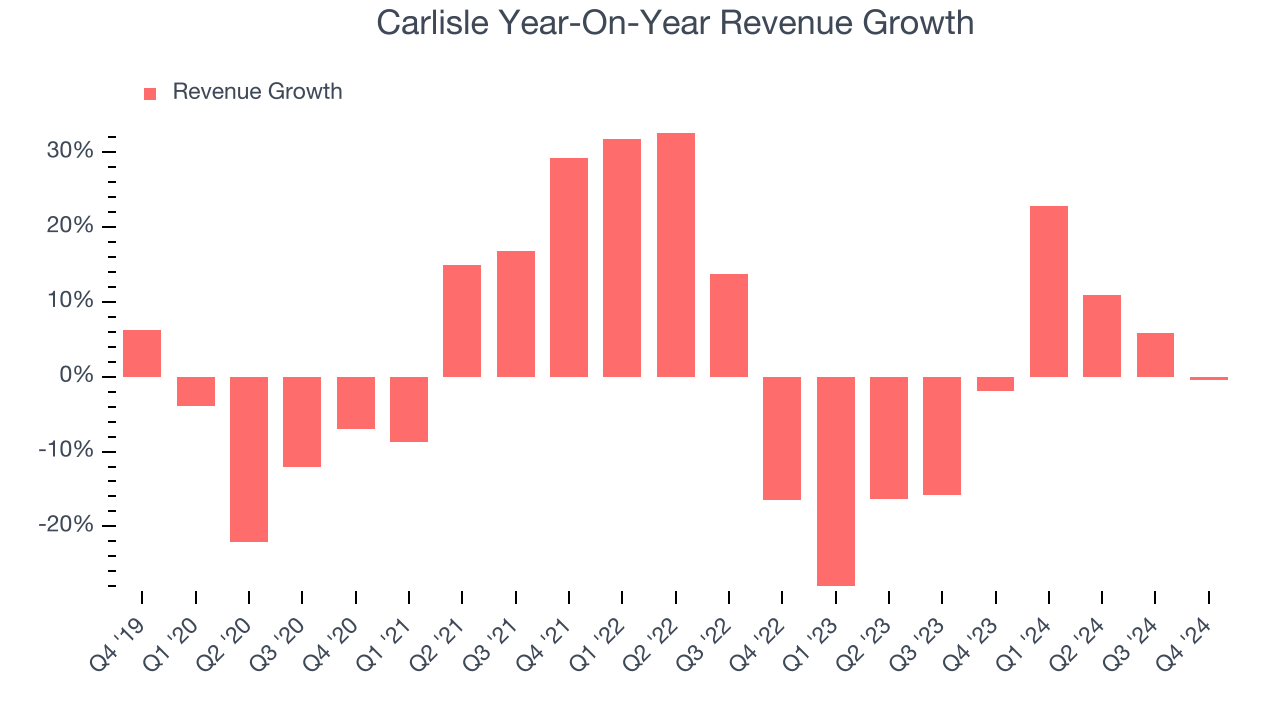
We can better understand the company’s sales dynamics by analyzing its organic revenue, which strips out one-time events like acquisitions and currency fluctuations that don’t accurately reflect its fundamentals. Over the last two years, Carlisle’s organic revenue averaged 2.8% year-on-year declines. Because this number aligns with its normal revenue growth, we can see the company’s core operations (not acquisitions and divestitures) drove most of its results. 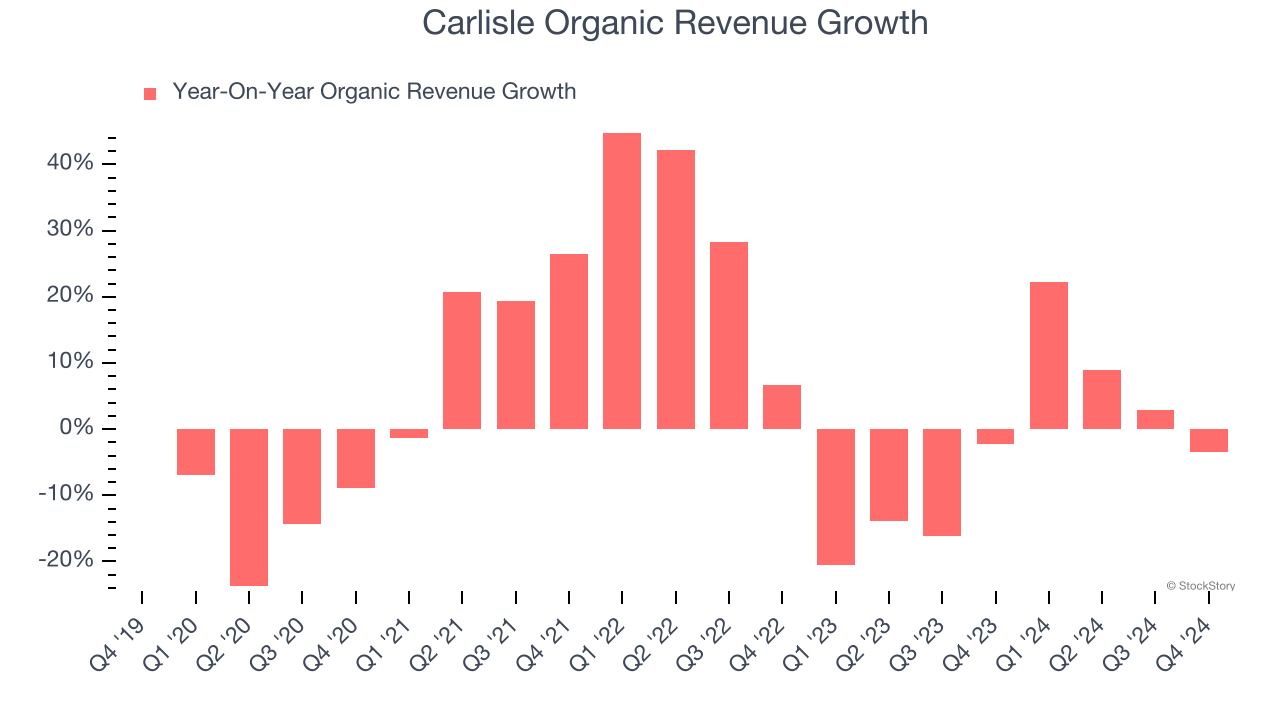
This quarter, Carlisle missed Wall Street’s estimates and reported a rather uninspiring 0.4% year-on-year revenue decline, generating $1.12 billion of revenue.
Looking ahead, sell-side analysts expect revenue to grow 6.1% over the next 12 months. While this projection indicates its newer products and services will catalyze better top-line performance, it is still below the sector average.
Unless you’ve been living under a rock, it should be obvious by now that generative AI is going to have a huge impact on how large corporations do business. While Nvidia and AMD are trading close to all-time highs, we prefer a lesser-known (but still profitable) stock benefiting from the rise of AI. Click here to access our free report one of our favorites growth stories.
Adjusted Operating Margin
Operating margin is a key measure of profitability. Think of it as net income - the bottom line - excluding the impact of taxes and interest on debt, which are less connected to business fundamentals.
Carlisle has been a well-oiled machine over the last five years. It demonstrated elite profitability for an industrials business, boasting an average operating margin of 18.2%. This result isn’t too surprising as its gross margin gives it a favorable starting point.
Analyzing the trend in its profitability, Carlisle’s operating margin rose by 11.5 percentage points over the last five years, showing its efficiency has meaningfully improved.
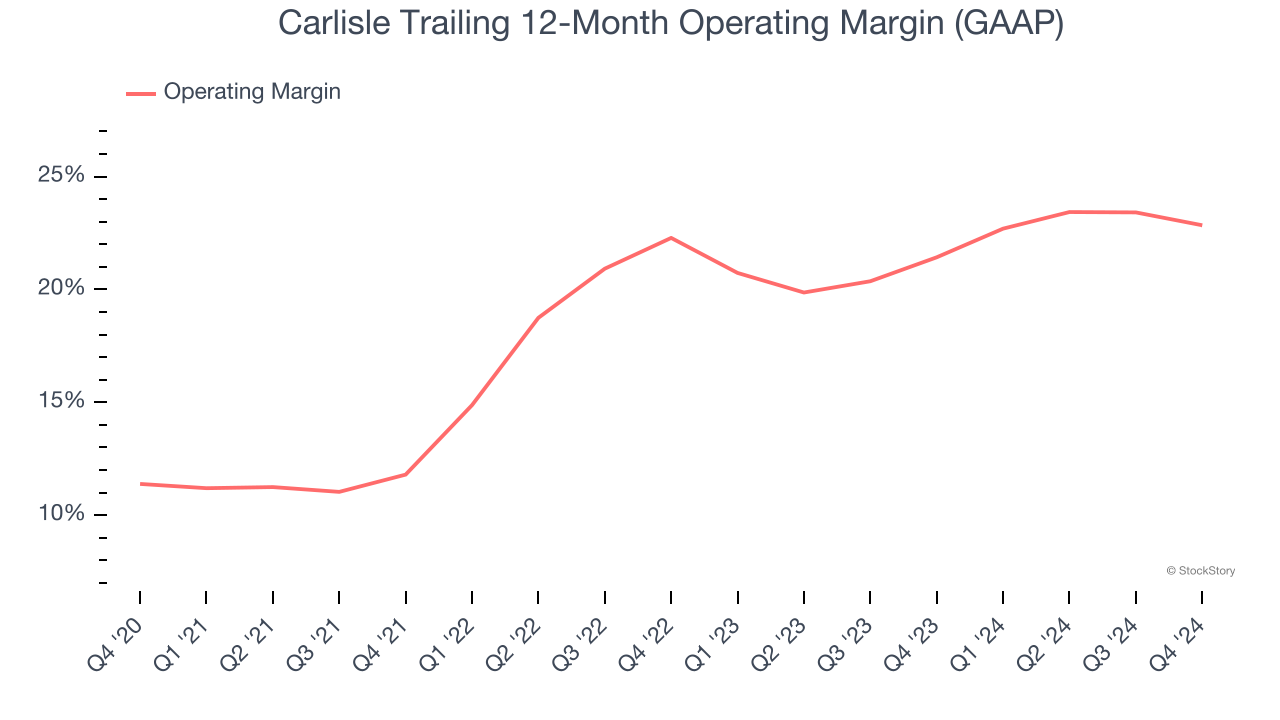
In Q4, Carlisle generated an operating profit margin of 19.9%, down 2.5 percentage points year on year. Since Carlisle’s operating margin decreased more than its gross margin, we can assume it was recently less efficient because expenses such as marketing, R&D, and administrative overhead increased.
Earnings Per Share
We track the long-term change in earnings per share (EPS) for the same reason as long-term revenue growth. Compared to revenue, however, EPS highlights whether a company’s growth is profitable.
Carlisle’s EPS grew at a spectacular 16.2% compounded annual growth rate over the last five years, higher than its flat revenue. This tells us management responded to softer demand by adapting its cost structure.
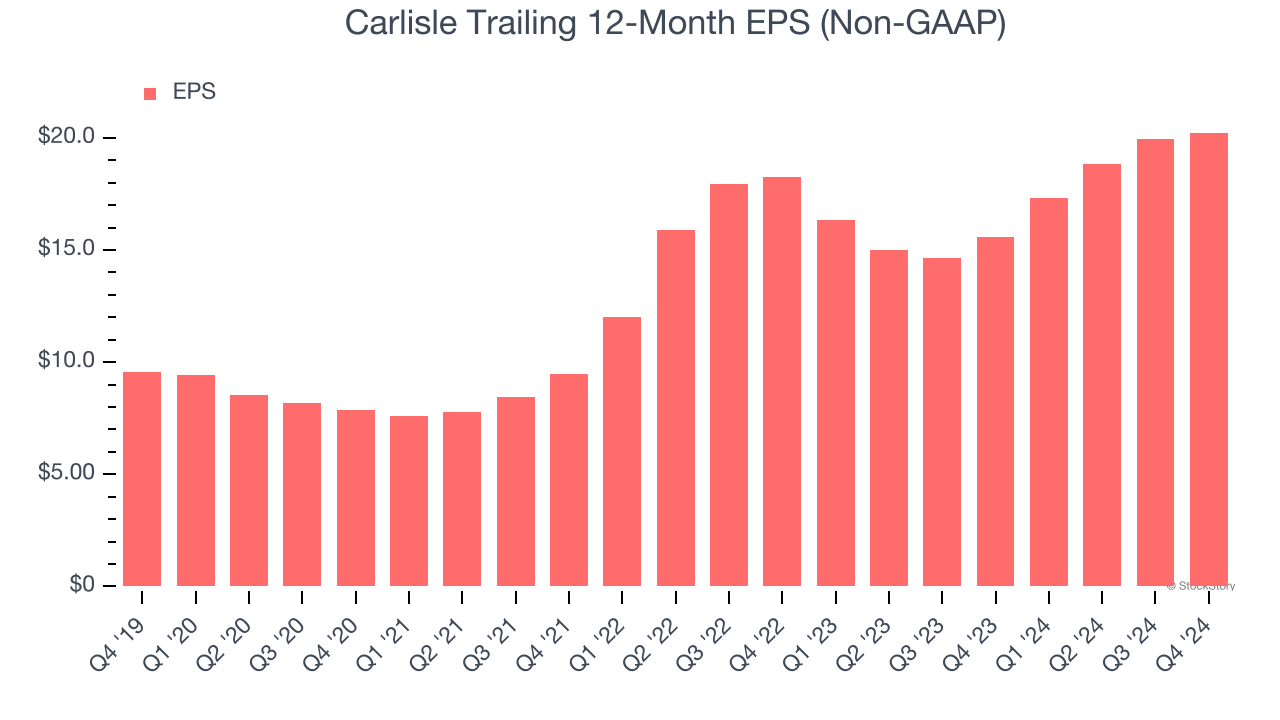
We can take a deeper look into Carlisle’s earnings quality to better understand the drivers of its performance. As we mentioned earlier, Carlisle’s operating margin declined this quarter but expanded by 11.5 percentage points over the last five years. Its share count also shrank by 20.5%, and these factors together are positive signs for shareholders because improving profitability and share buybacks turbocharge EPS growth relative to revenue growth. 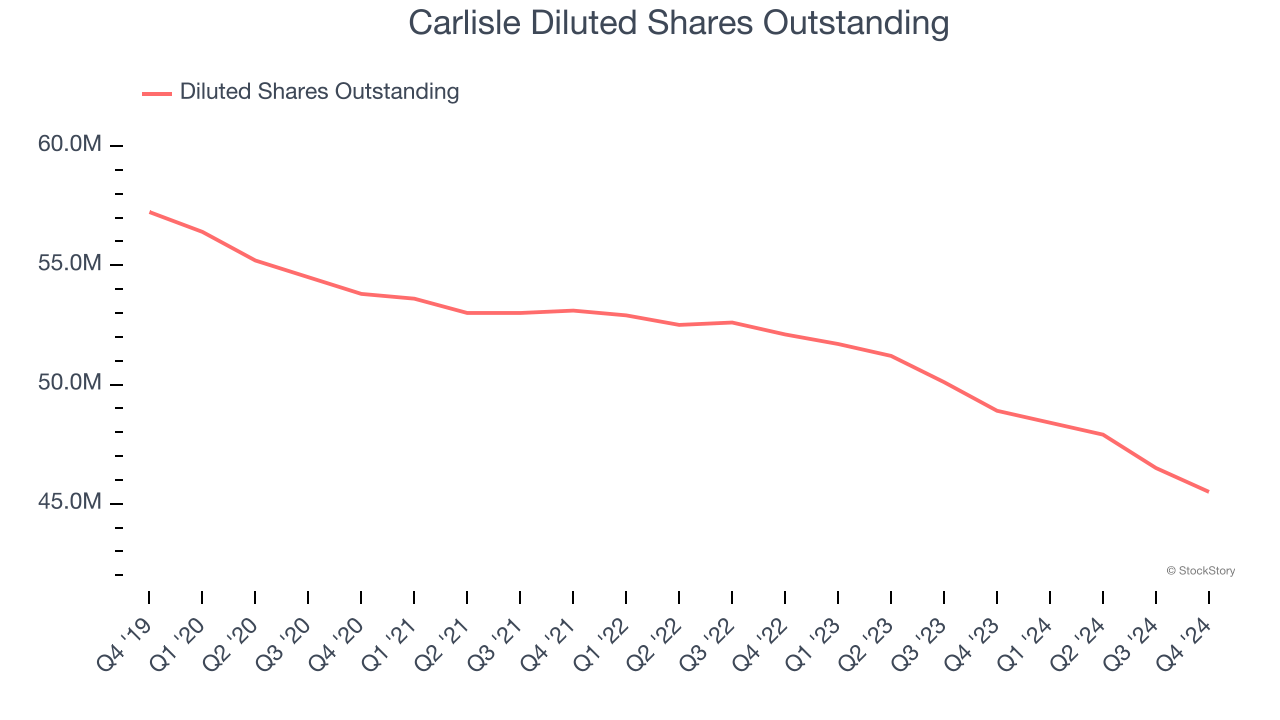
Like with revenue, we analyze EPS over a more recent period because it can provide insight into an emerging theme or development for the business.
For Carlisle, its two-year annual EPS growth of 5.3% was lower than its five-year trend. We hope its growth can accelerate in the future.
In Q4, Carlisle reported EPS at $4.47, up from $4.18 in the same quarter last year. This print beat analysts’ estimates by 1.1%. Over the next 12 months, Wall Street expects Carlisle’s full-year EPS of $20.23 to grow 12.4%.
Key Takeaways from Carlisle’s Q4 Results
Revenue missed, but EPS beat by a small amount. 2025 guidance calling for mid-single-digit percentage revenue growth and 50 bps (half a percent) of EBITDA margin expansion compared to 2024 was roughly in line with expectations. Overall, there were any resounding positives in these results. The stock traded down 1.9% to $369 immediately following the results.
Carlisle may have had a tough quarter, but does that actually create an opportunity to invest right now? We think that the latest quarter is only one piece of the longer-term business quality puzzle. Quality, when combined with valuation, can help determine if the stock is a buy. We cover that in our actionable full research report which you can read here, it’s free.

